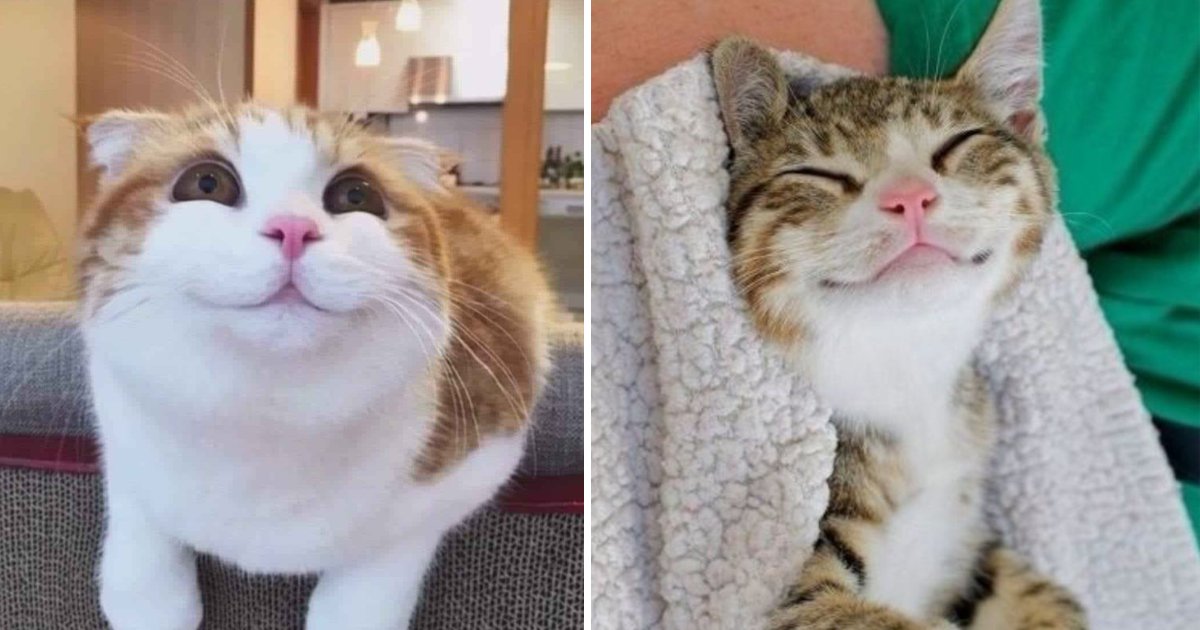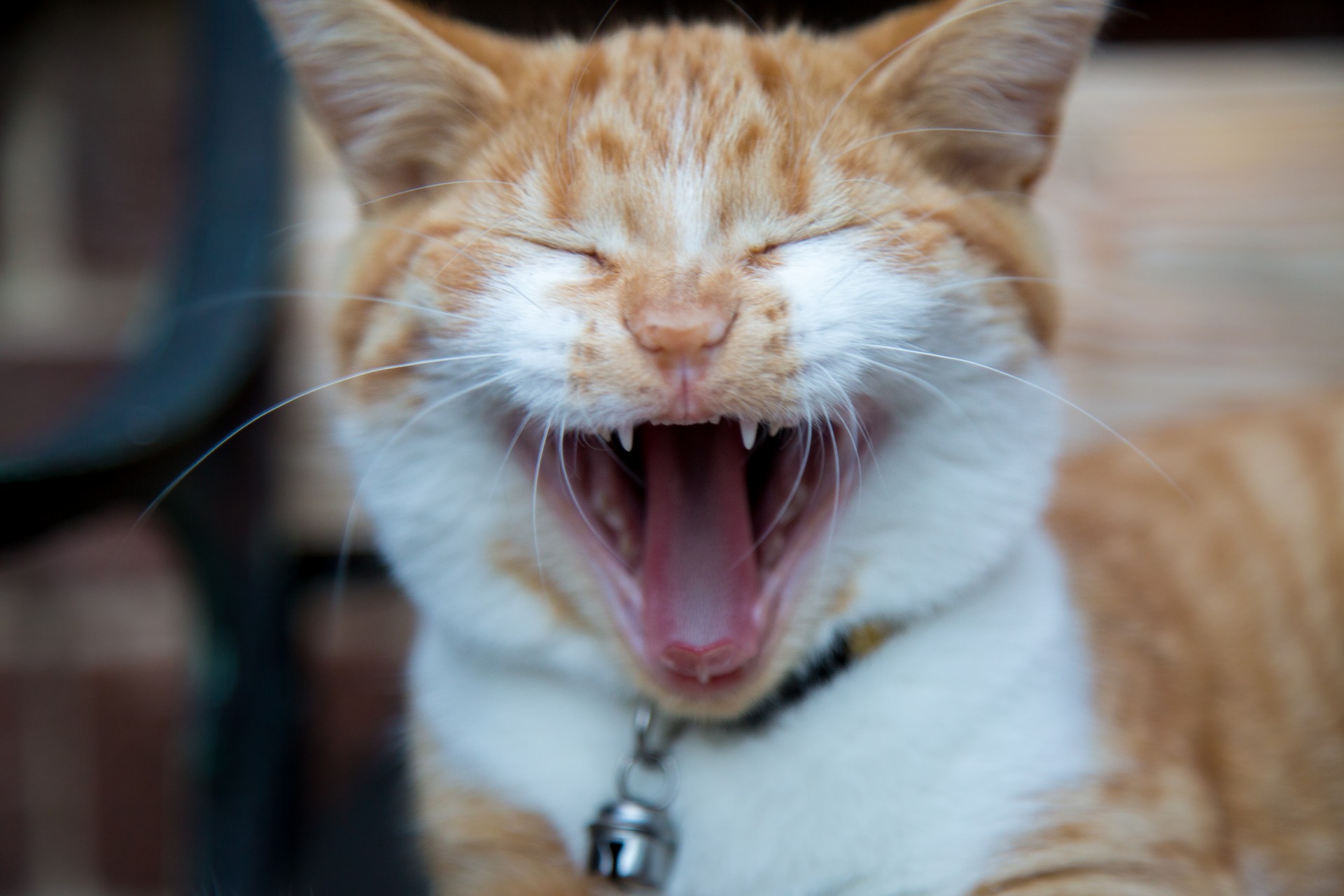Do Cats Smile? Decoding Feline Facial Expressions & Happiness
Do cats truly smile, or is our interpretation of their expressions colored by our own human biases? While a full, toothy grin might be absent, the feline world offers a nuanced language of happiness, communicated through subtle cues that often go unnoticed.
Cats, with their enigmatic allure, have long fascinated humans. One of the most endearing aspects of their behavior is the way they express themselves. But do they truly share the same joy we do? Or do they convey their contentment via other means?
| Feature | Details |
|---|---|
| Definition of "Smile" in Cats | Cats don't smile in the same way humans do. They lack the facial muscles to produce a traditional smile. |
| Key Indicators of Feline Happiness |
|
| "Resting Smile Face" | Due to the natural upward curve of a cat's mouth, they often appear to be smiling even when their expression is neutral. |
| Flehmen Response | A cats curling of the upper lip, which is used to enhance the sense of smell. It can sometimes be mistaken for a smile |
| Slow Blink Reciprocity | Pet owners can reciprocate a cat's slow blink, strengthening their bond. |
| Importance of Observation | Understanding a cats emotions through their unique forms of communication helps build a better bond. |
| Reference | PetMD - Do Cats Smile? |
It's crucial to remember that anthropomorphizing, or attributing human characteristics to animals, can sometimes lead to misinterpretations. While it's easy to project our own understanding of a smile onto a cat's facial expressions, it's essential to recognize that cats don't smile for the same reasons we do.
The concept of a "resting smile face" highlights this perfectly. The natural shape of a cat's mouth, with its upward curve at the corners, often gives the impression of a smile even when the cat is simply in a neutral state. This can be especially true with relaxed, content cats, who may appear to have a gentle, almost smiling expression. However, this isn't a conscious expression of joy in the same way a human smile is.
So, how do cats convey happiness? The answer lies in understanding their unique language of body cues. One of the most common and well-documented expressions of feline happiness is the "slow blink." By slowly closing and opening their eyes while gazing at us, cats are essentially offering a "cat kiss," a gesture of trust and affection. Pet owners can reciprocate this gesture, strengthening the bond with their feline companions.
Beyond the slow blink, a happy cat may also exhibit other behaviors. Purring, though not always an indicator of happiness, is a common sign of contentment. Kneading, a behavior often carried over from kittenhood, suggests comfort and relaxation. Head-butting, or "bunting," is a sign of affection and a way for cats to mark their territory with their scent. A relaxed posture, such as a stretched-out body or a curled-up position, can also indicate a happy and content cat.
Conversely, it is important to recognize signs of stress or discomfort. Dilated pupils, flattened ears, a tucked tail, and hissing are indications that a cat is not feeling comfortable or happy.
Cats are highly emotional creatures, and being able to decipher their emotions will strengthen the bond with a cat. Learning to read a cat's body language helps us to recognize the subtle cues that signal joy and contentment.
This also brings up the "flehmen response," which can sometimes be mistaken for a smile. This is a behavior where a cat curls back its upper lip, exposing its teeth, to better sense smells. This is a different function than that of a smile. The cat is not expressing happiness in this context; its just using its specialized sensory equipment.
The question of whether cats understand human smiles is also interesting. While they may not comprehend the full meaning of a human smile, they can recognize the act of narrowing their eyes, which, in many cultures, is often associated with happiness. Studies have shown that cats can learn to associate smiles with positive experiences, such as receiving food or affection.
In conclusion, while cats may not possess the same capacity for smiling as humans, they have developed their own unique and fascinating ways of expressing joy and contentment. By learning to understand their body language, facial expressions, and other cues, we can deepen our connection with these wonderful creatures and appreciate the complex emotional lives that lie beneath their enigmatic exteriors. So, the next time you see your cat "smiling" at you, remember it may be through a slow blink or a purr. Appreciate the subtle ways they show affection and contentment, and strengthen your bond by reciprocating their gestures of love and trust.
The key takeaway is that a cat's smile is not the same as a human smile. Cats use body language, facial expressions, and other behaviors to convey their emotions. Learning to understand these cues is essential for anyone who wants to build a strong bond with their feline friend.
Its true that the shape of a cat's mouth can sometimes resemble a smile, especially when the cat is relaxed. But the act of smiling to express contentment is not part of their typical behavior repertoire. Cats don't consciously try to smile to convey happiness.
It is anthropomorphizing a feline to assume they are smiling. In truth, cats are hardwired to avoid displaying any emotion. They use eye narrowing and other signals in the same way humans display a genuine smile. But it is all part of their body language.
They have their own methods for displaying joy and affection. A happy cat may have relaxed eyes, soft ears, and a slightly open mouth, which can resemble a smile. They may purr, knead, or rub against you. Also, cats will often use their tail to convey their feelings. A tail held high, with a slight curve, indicates contentment and happiness.
As dedicated cat lovers, we learn to read our cats through familiarity and patience. When we know that they are content, it can be easy to see a smile on their face. However, cats dont have the ability to smile. While they can make certain facial expressions, smiling is beyond their skills.
While they dont naturally smile to express happiness, they can learn behaviors from the people around them. Cats are highly emotional creatures, and the better equipped you are to understand them, the happier both of you will be. So the next time you see a cat staring at you with soft, lazy eyes and giving you a slow blink, youll know they are showing you a smile.


